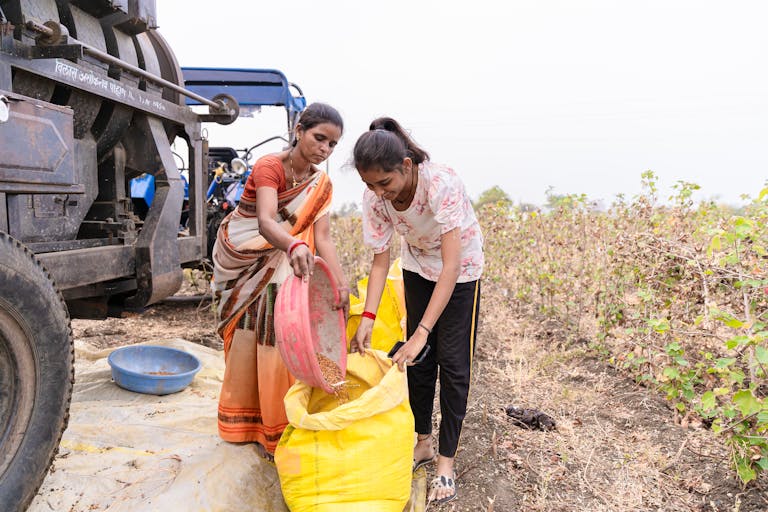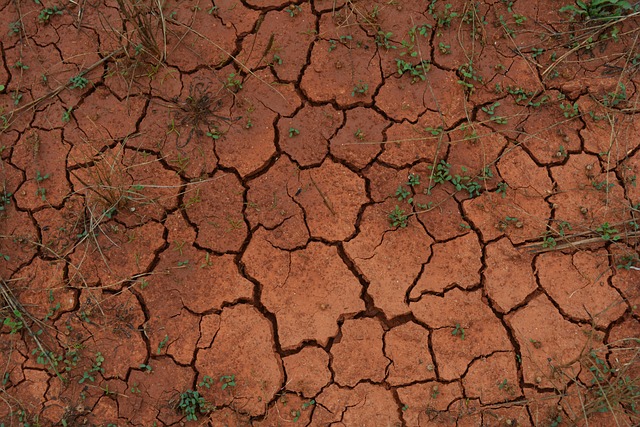
.
Would u believe me if I told you we can turn the desert into a fertile land capable of providing food sustainably forever? Believe me or not, you will find out today in this article. Let me help you understand what exactly am talking about. Imagine your rich grandfather bought a car, used it, and parked because the tires got worn out. It will run again on condition that you replace the oil and tires once in a while. Then the car will start to function with no problem as long as you service it. Away from cars and their service. Let’s talk of new innovations in agriculture for this case, and our approach to land use will be permaculture. The land is the car and permaculture is the service and new tires.
What do We mean by Permaculture?
The term Permaculture comes from the word permanent agriculture. it is a broad nature-based agricultural practice that aims to create sustainable ecosystems that meet society’s needs while also benefiting the environment. It integrates tree crops, animals, buildings, people, and communities. It is also known as Applied ecology.
History of Permaculture.
Several agricultural scientists, like Franklin Hiram King and Bill Mollison, coined this concept of permaculture as early as 1911. In Africa, Permaculture is a new philosophy that we are slowly assimilating into traditional forms of agriculture and environmental protection in the African fashion. To Africa, permaculture is considered ecologically, socially, economically, and spiritually friendly. Furthermore, other traditional practices were critical to the formulation of permaculture since they highly depend on non-renewable resources.
Designed as a way of managing the supply and distribution of water in semi-arid regions. Additionally, traditional methods poison land and water, reduce biodiversity and remove billions of tons of topsoil from previously fertile landscapes. Permaculture is the proper response to widespread deforestation, tillage agriculture, and erosion in the northeastern and hill regions of Uganda and Africa at large.
What are the permaculture principles and techniques for small farmers?
- regulating agriculture
- how water and energy are sourced
- rainwater harvesting
- environmentally friendly building plans
- mitigating deforestation
- managing or reusing waste, promoting quality for animal life
- promoting the importance of the Permaculture design process
- creating agriculturally productive ecosystems
- doing whatever possible to improve both the economic and social state of a community.
What are the 3 core ethics of permaculture?
Earth Core.
Whatever methods we use to pursue a yield, whether that yield is agricultural or not, should consider the preservation and stewardship of the earth. In permaculture, if we take water from an aquifer, we would replenish the water. We can create ponds and more water-catchment systems in our agricultural lands to provide water for growing food.
The Core of People.
We never exploit the farmworkers. People are never just a means to the creation of an end product. Because of permaculture, they would live richer lives.
Human relationships, just like the relationships of the elements in a garden are at the heart of People Care. This ethic is where the community comes in and plays a huge role in living out the fullness of permaculture. In essence, not only do we pay farmworkers a fair wage, but we also give them a fair share of what they grow.
Fair Share
The third ethic, Fair Share, is one where we share the abundance generously. In an ideal system, farm laborers would have the first dibs on the crops because they would have ownership of that farm. And would distribute the harvest equitably to those in need.
Application of Permaculture.

I am personally excited to share this information on how to finally turn arid land into productive soil. Now let’s dive into understanding how to grow something from nothing through by application of practical permaculture.
The power of permaculture has been put to test in parts of the Sahara and Saheli, southwest Kenya, and Karamoja regions where the area is naturally dry and hot. However, exacerbated climate changes have led to prolonged droughts. The soils dry up forming hardpans and making them hydrophobic. When the rains come, the soil cannot absorb the water so it simply floods the planes and evaporates.
The livelihood of these people highly depends on the lands and yet the little rains simply wash away nutrients and any left vegetation leading to barren lands. The communities are left with vast dry cracked lands when the sun comes back.
Water absorption and retention ability are key to restoring the ecosystems on this Buren land. A set of specific permaculture practices is applied to increase water intake, and within a year, the place is bursting with fauna and flora.
Here is how innovative NGO’s like Dig It Africa together with the communities in this area have planted trees and covered over 100 acres. They dug and made bunds that have captured 2 billion liters of water, restoring the water table over 20 years.
Permaculture is used to reclaim land from the desert and rejuvenate it to its original healthy state. Hence improving the ecosystem and livelihood of the community. The permaculture practice has been around for years in other parts of the world, like Asia and Australia, which are used to reclaim desert land. They can change the scenery and revive the ecosystem.
How to step up a permaculture garden in the Desert.
To begin with, mobilize community members with the tools needed, including a hoe, tape measure, panga, spade, rope, and level beam. Measure and draw circles on the ground of 5 meters in diameter.
Start to dig several semi-circle earthen ridges of inclined depth and 5m diameter called bunds across the land. These bunds can trap and retain flowing water when the rains come. Long enough until the water is absorbed into the soil
Plant some grass seeds in the semi-circle and cover them to protect them from animals and birds. Simple, we are done now, we wait for the rains to fall.
In just a few months, vegetation starts to grow because of the trapped water, which is absorbed into the soil. Providing favorable conditions for plant and microorganism growth. So, with a period of 1 or 2 years, the whole bare land is now restored and can support sustainable agriculture.
What are the Benefits of permaculture?
Environmental
- Reduces soil erosion and improves soil health through sustainable agricultural practices.
- Promotes biodiversity by creating diverse ecosystems that support various species of plants and animals.
- Minimizes water usage and improves water retention in the soil through techniques like mulching and swales.
- Reduces reliance on chemical fertilizers and pesticides, thus decreasing pollution and improving ecosystem health.
- Encourages carbon sequestration through the planting of trees and perennial plants, helping to combat climate change.
Social
- Strengthens community bonds through collaborative projects and shared resources.
- Provides educational opportunities about sustainable living and environmental stewardship.
- Increases food security by promoting local food production and reducing dependence on global supply chains.
- Encourages a healthier lifestyle by promoting the consumption of fresh, locally grown produce.
- Fosters resilience and self-sufficiency in communities, enabling them to better withstand economic and environmental shocks.
What are the Weaknesses of Permaculture?
- Implementation of permaculture can be costly to adjust agricultural processes and infrastructure in a way that the concept of permaculture can be really lived daily. Short-term losses vs. long-term benefits: permaculture is a long-term game instead of a short-term solution. Even though it makes sense to rely on long-term solutions, it may also lead to problems for many farmers since they have to invest significant money and have to wait an extensive period until they see the rewards.
- Skepticism regarding this new concept: In many poor countries all over the world, the local population is dependent on the yields of farmers to ensure their food supply, changing agricultural practices poses a great risk if permaculture doesn’t deliver sufficient crop yields.
- Unwanted bacteria and pests may spread: Since the concept of permaculture also forbids the use of chemical pesticides, chances are that bacteria and pests can spread quite easily, which may lead to the loss of crop yields.
- Permaculture knowledge is still rather limited: since permaculture is a rather new agricultural concept, farmers all over the world often lack the knowledge to change their agricultural processes so that they are in line with the principles of permaculture.
Conclusion.
In conclusion, permaculture provides a sustainable and regenerative approach to agriculture, integrating ecological principles with practical farming techniques. By designing systems that work with nature rather than against it, farmers and gardeners can create productive landscapes that restore soil health, conserve water, and enhance biodiversity.
Moreover, whether you are a large-scale farmer or a background gardener, adopting permaculture principles can lead to long-term resilience and profitability. In regions like Senegal and Kenya, farmers are using bunds to capture and retain water. This technique not only improves soil moisture but also boosts crop yields, proving that simple, nature-based solutions can transform Agriculture even in arid climates. As the demand for sustainable food production rises, now is the perfect time to integrate permaculture into your practices



This is a great write up about boosting our soil health to boost soil fertility and deal with changing climatic comditions